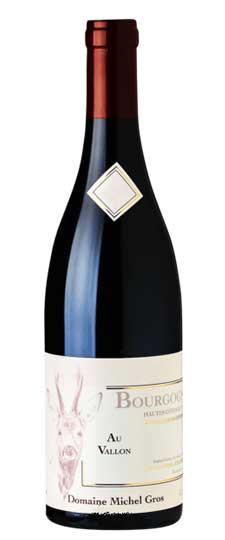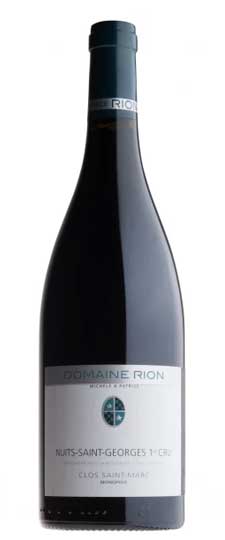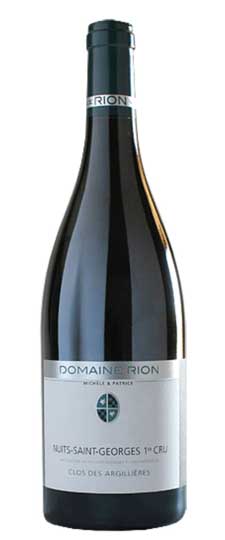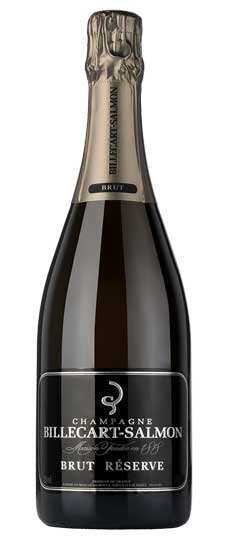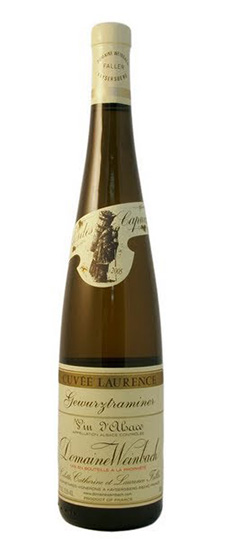Wine Score
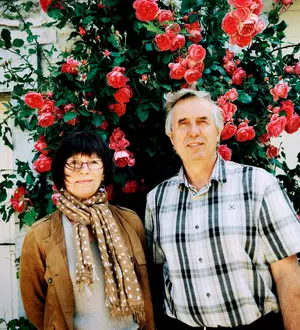
Michele & Patrice Rion
Patrice Rion and his wife Michèle began their own small domaine with just two wines, an outstanding Bourgogne Rouge Bons Batons and the sumptuous Chambolle Musigny les Cras, in 1990 while Patrice continued as winemaker at the Domaine Daniel Rion. They enlarged in 2000 when Patrice left Domaine Daniel Rion. He has built a cuverie and cellar on his own property and also makes a small range of négociant cuvées to supplement their small vineyard holding. He has recently been joined in the business by son Maxime.
Since he left the latter in 2000 he has added Chambolle Musigny les Charmes and Nuits St Georges Clos des Argillières (his share from the family domaine) and in 2005 Nuits St Georges Terres Blanches (white), some more Argillières and the monopole Nuits St Georges Clos St Marc in 2006. Also from 2006 he has entered an agreement to manage the vineyards and purchase the grapes from a small estate in Chambolle which includes some Chambolle Musigny Les Amoureuses and grand cru Bonnes Mares.
To complement this range there are some additional cuvées, notably Chambolle Musigny and Nuits St Georges vieilles vignes, made from purchased grapes.
The wines are made in Patrice’s purpose built small winery in Prémeaux. Patrice was one of the first to train his vines higher than the Burgundy standard, to increase the canopy without shading the grapes, which gives better ripening and colour. He is also frequently an innovator in the cellar and offers some wines (Bourgogne Bon Batons, white wines, half bottles) in stelvin screwcaps. The grapes are sorted on two tables de tri, one before destemming and the other after. The whole berries are conveyed to their stainless steel vats for a cuvaison of about three weeks: 7 days at 11/12°, followed by 2 weeks fermentation and post-fermentation, not exceeding 32°. There are now two barrel cellars so that each vintage can be aged for 18 months without racking. Most wines now receive 50% new wood.
Patrice’s style is for very pure, harmonious wines, skilfully vinified and then matured in oak barrels with a well judged percentage of new oak (usually 50% new) for 18 months, without racking or fining.
Jasper Morris MW, Burgundy Wine Director and author of the award-winning Inside Burgundy comprehensive handbook.
Grape Variety
Pinot Noir
In many ways, Pinot Noir is the polar opposite of Cabernet Sauvignon. Pinot Noir has thin skins not thick and makes much lighter paler wines that are not as well suited to blending or long-term aging. Cabernet Sauvignon needs extra heat to ripen fully, while Pinot Noir needs cooler conditions to retain its seductive earthy charm and falls flat in places where it gets too ripe and fruity.
Pinot Noir is probably the most frustrating, and at times infuriating, wine grape in the world. However when it is successful, it can produce some of the most sublime wines known to man. This thin-skinned grape which grows in small, tight bunches performs well on well-drained, deepish limestone based subsoils as are found on Burgundy’s Côte d’Or.
Burgundy Wine
About 200 million years ago, the region was part of a vast, tropical sea which created limestone soils. These soils are the secret behind the zesty minerality that’s the hallmark of Burgundy wines. In fact, if you venture into the vineyards you can find chunks of limestone or marl (limestone mixed with clay) that contain fascinating fossilized sea creatures mixed within.
The easiest way to wrap your brain around Burgundy is to understand that there are really only two grape varieties to remember Pinot Noir & Chardonnay. Burgundy is not only the original home of these grapes, but the “terroir” (tare-wah) that best expresses their character – elegant, aromatic, complex and highly enjoyable
- Red Burgundy is wine that is made in the Burgundy region of eastern France using 100% Pinot Noir grapes. That’s right, Red Burgundy is just a Pinot Noir.
- White Burgundy is also made in Burgundy, but, since it is white, it is made from 100% Chardonnay grapes.
Burgundy has become known for being the best land in the world for producing both Pinot Noir and Chardonnay, and it is for this reason that Burgundy wines have received such acclaim. In fact, the quality of the land is considered to be so important to the creation of red and white Burgundy, that inside the Burgundy region, vineyards are classified by four levels, depending on how exceptional it is believed one’s plot of land is for growing the grapes. When buying a bottle of Burgundy, one of these four classifications will be labeled on the bottle:
- Grand Cru – This classification is reserved for the best vineyards. Only about 2 percent of all vineyards in Burgundy receive this classification
- Premier Cru – These wines are produced from vineyards that are still considered to be of stellar quality, but just a small step down from Grand Cru. These vineyards make up about 12 percent of all vineyards in Burgundy and can also produce wines that are quite expensive.
- Village Wines – These are Burgundies that are produced from grapes sourced from several vineyards in 1 of the 42 villages of Burgundy. You will know it’s a Village wine because the name of the village where the grapes were sourced will be labeled on the bottle. These wines represent 36 percent of all Burgundy.
- Regional Wines – Finally, Regional wines are considered to be the lowest level of classification. These are wines that are created from a combination of vineyards from a variety of villages within Burgundy, as opposed to a single village, like Village wines. As such, wines of this classification will simply be labeled as a wine of Bourgone. These wines represent 50 percent of all wines produced in Burgundy.
Burgundy Wine Style
To the ‘vigneron” (winemakers/growers) Burgundy is not only the original home of these grapes, but the terroir that best expresses their character – elegant, aromatic, complex and highly enjoyable. Pinot noir from Burgundy as “Rustic” “Barnyard” or “Forest-floor”
No other wine region in the world is as well-known for its terroir as Burgundy, where vineyards that are metres apart can produce vastly different wines from the same grapes.
Nuits-St-Georges
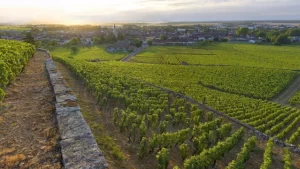 Nuits-Saint-Georges gives its name to the Cotes de Nuits, the northernmost part of the Cote d’Or and a rival to Beaune as a center of the business of wine in Burgundy. It is a lively wine sitting on either side of the base of the beautiful Vallerots combe and the Meuzin river. Its patron saint, Georges, gives his name to the most famous vineyard of the appellation, which in turn became part of the hyphenated town name in the 19th century. The appellation Nuits-Saint Georges is really two distinct zones, divided by the town itself on either side of the Meuzin valley. The northern part extends as far as the border of Vosne-Romanée, and the southern section lies partly in Nuits-Saint-Georges and partly in the commune of Premeaux. The wines from the vineyards of Premeaux are considered to be lighter than the rest in the southern section. The richest and most highly prized of the vineyards to the south of town are the Premiers Crus that come up to the village (including ‘Les Saint Georges’ itself) To the north, the Premiers Crus lie in a band that stretches to the borders with Vosne-Romanee, and show a lot of the finesse associated with the wines of Vosne.
Nuits-Saint-Georges gives its name to the Cotes de Nuits, the northernmost part of the Cote d’Or and a rival to Beaune as a center of the business of wine in Burgundy. It is a lively wine sitting on either side of the base of the beautiful Vallerots combe and the Meuzin river. Its patron saint, Georges, gives his name to the most famous vineyard of the appellation, which in turn became part of the hyphenated town name in the 19th century. The appellation Nuits-Saint Georges is really two distinct zones, divided by the town itself on either side of the Meuzin valley. The northern part extends as far as the border of Vosne-Romanée, and the southern section lies partly in Nuits-Saint-Georges and partly in the commune of Premeaux. The wines from the vineyards of Premeaux are considered to be lighter than the rest in the southern section. The richest and most highly prized of the vineyards to the south of town are the Premiers Crus that come up to the village (including ‘Les Saint Georges’ itself) To the north, the Premiers Crus lie in a band that stretches to the borders with Vosne-Romanee, and show a lot of the finesse associated with the wines of Vosne.
Red Wine
Powerful and structured, this is the wine that gives the Côte de Nuits its reputation as full-bodied and sturdy. The color should be brilliant crimson with a bouquet of roses and liquorice. You get that Cotes de Nuits black cherry in youth with strawberry and blackcurrant in the mix, and the usual Pinot Noir secondary aromas with age. The southern wines are more muscular and full-bodied, while the wines on the Vosne side show more restraint and elegance. Red wines from this region go well with any full-flavored meat. Game, especially, is often mentioned with mature wines from Nuits. Locals will serve it with river fish in red wine sauces. Soft-centered cheeses in the style of Époisses, Langres or Soumaintrain are the classic combination.
White Wine
White wines from Nuits-St-Georges are much rarer than red wines, but they have the quality to make them worth seeing out. They can be opulent, and make an excellent match with grilled shellfish, cheesy dishes or grilled sea-fish. These wines have a beautiful golden color, and can be dense, floral, biscuity and honeyed. Around 10 hectares of land here produce white grapes, whilst the remaining 298 hectares produce red grapes.

